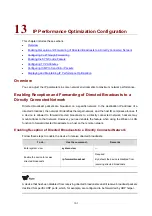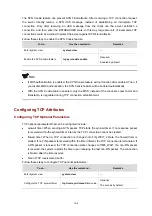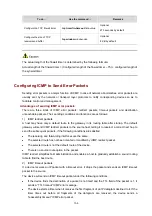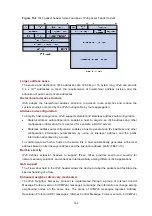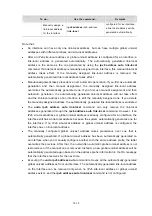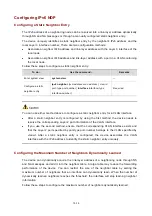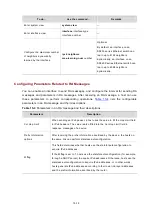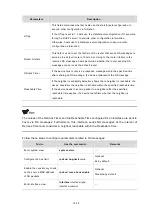
15-1
15
IPv6 Basics Configuration
This chapter includes these sections:
z
z
IPv6 Basics Configuration Task List
z
Configuring Basic IPv6 Functions
z
z
z
Configuring IPv6 TCP Properties
z
Configuring ICMPv6 Packet Sending
z
Displaying and Maintaining IPv6 DNS
z
z
Troubleshooting IPv6 Basics Configuration
IPv6 Overview
Internet Protocol version 6 (IPv6), also called IP next generation (IPng), was designed by the
Internet Engineering Task Force (IETF) as the successor to Internet Protocol version 4 (IPv4).
The significant difference between IPv6 and IPv4 is that IPv6 increases the IP address size
from 32 bits to 128 bits. This section covers the following:
z
z
z
IPv6 Neighbor Discovery Protocol
z
z
z
IPv6 Features
Header format simplification
IPv6 cuts several IPv4 header fields or moves them to the IPv6 extension headers to reduce the
length of the basic IPv6 packet header. The basic IPv6 packet header has a fixed length of 40
bytes to simplify IPv6 packet handling and improving the forwarding efficiency. Although an
IPv6 address size is four times larger than an IPv4 address, the basic IPv6 packet header size
is only twice the size of the option-less IPv4 packet header.





